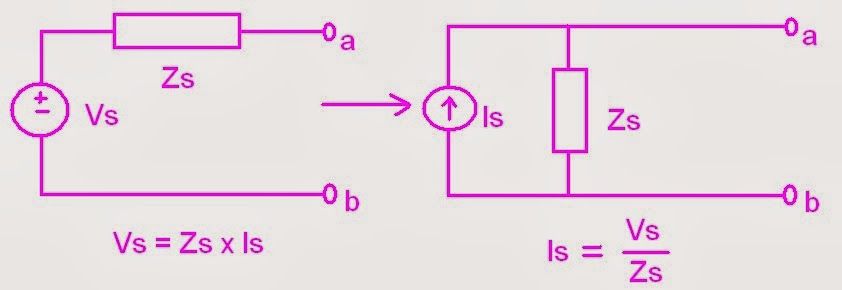Thevenin's Theorem- states that any network of voltage sources and resistors can be reduced to a single voltage source and a single resistor which are in SERIES with each other.
Example problem;
In the circuit above we are required to obtain the thevenin's circuit equivalent.
thevenin's circuit equivalent
To achieve this goal, on the circuit given above we must acquire Vth and Zth. To do this, in getting Zth we first kill all sources present in the circuit. We have
So let's apply the series-parallel combination.
* - means series
// means parallel
j2 Ω * 6 Ω
Z1 = 6 + j2 Ω
Z1// -j4
Z2 = (6+j2)(-j4) / (6+j2)+(-j4)
Z2 = 12/5 - j16/5 Ω
Z2 * 10 Ω
Zth = 62/5 - j16/5 Ω
next is to solve for Vth. let's use again our 1st circuit.
In solving Vth we can apply any analysis that is fit to the circuit. We will use KVL.
75∠ 20 = 6 I + j2 I + (-j4) I
75∠ 20 = I (6 + j2 + (-j4))
I = 11.86∠ 38.43 A
Vth= I x Z (capacitor)
Vth = 11.86∠ 38.43 x (-j4)
Vth = 47.43∠ -51.565
What happen to 10 Ω resistor?
Our circuit on the right side is open. one terminal of our resistor is hanged. Therefore there is no current present across this resistor.
our thevenin equivalent circuit is :
I've learned that in solving circuit using thevenin's theorem in AC circuit it has the same application as we solve the dc circuits.The difference is the application of complex numbers.




























